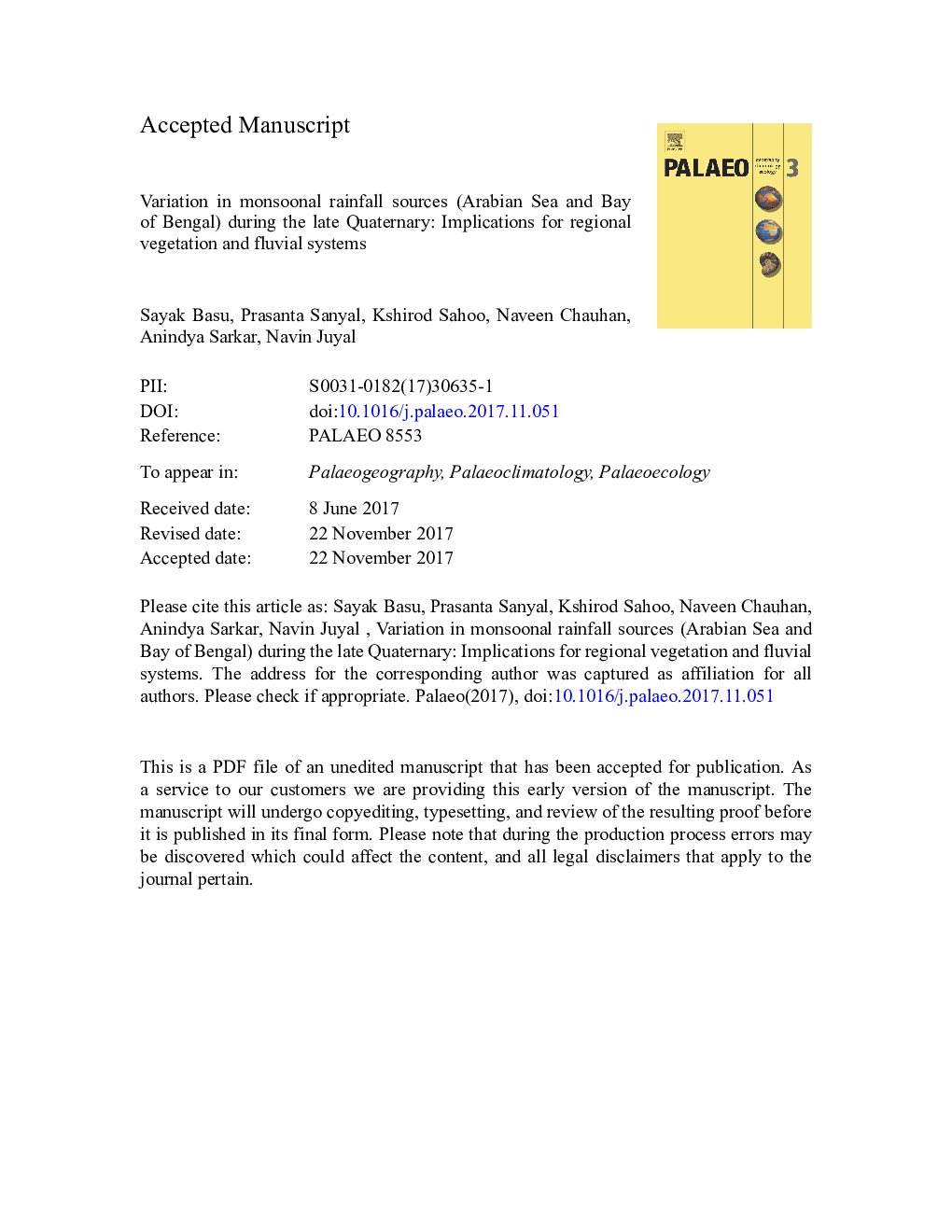| کد مقاله | کد نشریه | سال انتشار | مقاله انگلیسی | نسخه تمام متن |
|---|---|---|---|---|
| 8868410 | 1622101 | 2018 | 51 صفحه PDF | دانلود رایگان |
عنوان انگلیسی مقاله ISI
Variation in monsoonal rainfall sources (Arabian Sea and Bay of Bengal) during the late Quaternary: Implications for regional vegetation and fluvial systems
ترجمه فارسی عنوان
تنوع در منابع باران مصنوعی (دریای عربی و خلیج بنگال) در اواخر کواترنری: تاثیرات روی گیاهان منطقه ای و سیستم های رگبار
دانلود مقاله + سفارش ترجمه
دانلود مقاله ISI انگلیسی
رایگان برای ایرانیان
موضوعات مرتبط
مهندسی و علوم پایه
علوم زمین و سیارات
فرآیندهای سطح زمین
چکیده انگلیسی
Indian summer monsoon (ISM) rainfall is contributed by two moisture sources; Arabian Sea (AS) and Bay of Bengal (BoB). While monsoonal rainfall in eastern and central India is dominantly contributed by the vapor derived from BoB, the source of rainfall in western India is mostly from AS vapor. Meteorological conditions in these regions also differ. In contrast to the BoB component of monsoon in central India, temporal variations in the AS sourced rainfall from western India are poorly constrained due to lack of paleohydrological records. Towards this, pedogenic carbonates were collected from two chronologically constrained cliff sections in the Gujarat alluvial plain, western India. Oxygen isotopic ratio of carbonate (δ18Ocarbonate) was used to reconstruct variation in AS derived rainfall and its influence on vegetation and fluvial systems in western India for the last 75 ka. A negative correlation between the δ18O value of modern rainwater and its amount (known as amount-effect) in the study site is used as a framework for interpreting variations in δ18Ocarbonate values. The amount-effect based monsoon reconstruction showed that two distinct dry phases at 75 ka to 60 ka and 30 ka to 10 ka were punctuated by a wet phase from 60 ka to 30 ka. These hydroclimatic variations in western India during the late Quaternary were responsible for the changes in regional fluvial architecture. Comparison with published records showed that fluctuations in the AS sourced rainfall were more pronounced compared to BoB component. Carbon isotopic ratio (δ13C) of carbonate and co-existing organic matter were used to reconstruct vegetation composition. Significant and strong positive correlation between δ18Ocarbonate and δ13Ccarbonate values indicated that rainfall amount controlled the relative abundance of C3-C4 plants in western India during the late Quaternary period. Furthermore, C3 plants were more abundant in western India for the last 75 ka relative to central India.
ناشر
Database: Elsevier - ScienceDirect (ساینس دایرکت)
Journal: Palaeogeography, Palaeoclimatology, Palaeoecology - Volume 491, 1 February 2018, Pages 77-91
Journal: Palaeogeography, Palaeoclimatology, Palaeoecology - Volume 491, 1 February 2018, Pages 77-91
نویسندگان
Sayak Basu, Prasanta Sanyal, Kshirod Sahoo, Naveen Chauhan, Anindya Sarkar, Navin Juyal,
